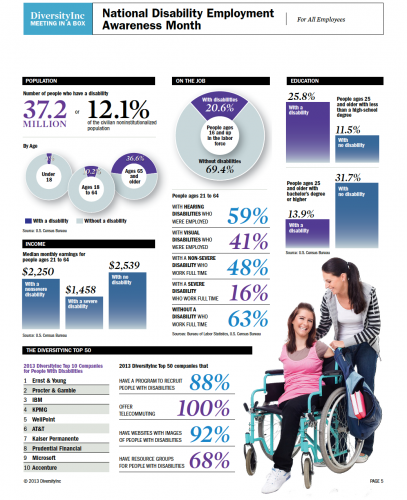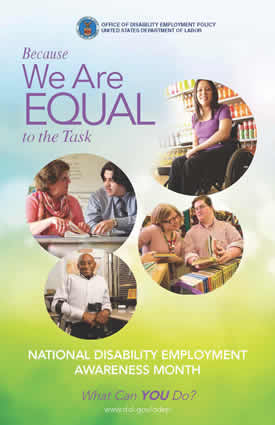Spinal Cord Injury Facts & Statistics
Who Do Spinal Cord Injuries Affect in the United States?
- 250,000 Americans are spinal cord injured.
- 52% of spinal cord injured individuals are considered paraplegic and 47% quadriplegic.
- Approximately 11,000 new injuries occur each year.
- 82% are male.
- 56% of injuries occur between the ages of 16 and 30.
- The average age of spinal cord injured person is 31.
- SCI injuries are most commonly caused by:
- Vehicular accidents 37%
- Violence 28%
- Falls 21%
- Sports-related 6%
- Other 8%
- The most rapidly increasing cause of injuries is due to violence; vehicular accident injuries are decreasing in number.
- 89% of all SCI individuals are discharged from hospitals to a private home, 4.3% are discharged to nursing homes.
- Only 52% of SCI individuals are covered by private health insurance at time of injury.
What Do Spinal Cord Injuries Really Cost?
- Length of initial hospitalization following injury in acute care units: 15 days
- Average stay in rehabilitation unit: 44 days
- Initial hospitalization costs following injury: $140,000
- Average first year expenses for a SCI injury (all groups): $198,000
- First year expenses for paraplegics: $152,000
- First year expenses for quadriplegics: $417,000
- Average lifetime costs for paraplegics, age of injury 25: $428,000
- Average lifetime costs for quadriplegics, age of injury 25: $1.35 million
- Percentage of SCI individuals who are covered by private health insurance at time of injury 52%
- Percentage of SCI individuals unemployed eight years after injury 63%. (Note: unemployment rate when this article was written was 4.7%)
Source: The University of Alabama National Spinal Cord Injury Statistical Center – March 2002
Number of New Injuries Per Year
32 injuries per million population or 7800 injuries in the US each year
Most researchers feel that these numbers represent significant under- reporting. Injuries not recorded include cases where the patient instantaneously or soon after the injury, cases with little or no remaining neurological deficit, and people who have neurologic problems secondary to trauma, but are not classified as SCI. Researchers estimate that an additional 20 cases per million (4860 per year) die before reaching the hospital.
Total Number of People with SCI
- 82% male, 18% female
- Highest per capita rate of injury occurs between ages 16-30
- Average age at injury – 33.4
- Median age at injury – 26
- Mode (most frequent) age at injury 19
- Motor vehicle accidents are the leading cause of SCI (44%), followed by acts of violence (24%),falls (22%) and sports (8%), other (2%)
- 2/3 of sports injuries are from diving
- Falls overtake motor vehicles as leading cause after age 45
- Acts of violence and sports cause less injuries as age increases
- Acts of violence have overtaken falls as the second most common source of spinal cord injury
- Marital status at injury:
- Single 53%
- Married 31%
- Divorced 9%
- Other 7%
- 5 years post-injury:
- 88% of single people with SCI were still single vs. 65% of the non-SCI population
- 81% of married people with SCI were still married vs. 89% of the non-SCI population
- Employment status among persons between 16 and 59 years of age at injury:
- Employed 58.8%
- Unemployed 41.2%
(includes: students, retired, and homemakers)
- Employed 8 years post-injury:
- Paraplegic 34.4%
- Quadriplegic 24.3%
People who return to work in the first year post-injury usually return to the same job for the same employer. People who return to work after the first year post-injury either worked for different employers or were students who found work.
How are spinal injuries caused?
Until the most recent figures were released by NSCIA in August, 1995, these were considered as the major causes of spinal cord injuries. See Answer to # 4 and Dr. Wise Youngís statistics in Section 2 for all the most recent demographics. One of the most surprising findings is that acts of violence have now overtaken falls as the second most common source of spinal cord injury, as of the 1995 findings.
Previous To 1995:
- Motor vehicles 48%
- Falls 21%
- Sports 14% (66% of which are caused in diving accidents)
- Violence 15%
- Other 2%
Since 1988, 45% of all injuries have been complete, 55% incomplete. Complete injuries result in total loss of sensation and function below the injury level. Incomplete injuries result in partial loss. “Complete” does not necessarily mean the cord has been severed. Each of the above categories can occur in paraplegia and quadriplegia.
Except for the incomplete-Preserved motor (functional), no more than 0.9% fully recover, although all can improve from the initial diagnosis.
Overall, slightly more than 1/2 of all injuries result in quadriplegia. However, the proportion of quadriplegics increase markedly after age 45, comprising 2/3 of all injuries after age 60 and 87% of all injuries after age 75.
92% of all sports injuries result in quadriplegia.
Most people with neurologically complete lesions above C-3 die before receiving medical treatment. Those who survive are usually dependent on mechanical respirators to breathe.
50% of all cases have other injuries associated with the spinal cord injury.
Most Frequent Neurological Category
Quadriplegia, incomplete 31.2%
Paraplegia, complete 28.2%
Paraplegia, incomplete 23.1%
Quadriplegia, complete 17.5%
Hospitalization
(Important: This section applies only to individuals who were admitted to one of the hospitals designated as “Model” SCI centers by the National Institute of Disability and Rehabilitation Research.)
Over 37% of all cases admitted to the Spinal Cord Injury System sponsored by the NIDRR arrive within 24 hours of injury. The mean time between injury and admission is 6 days.
Only 10-15% of all people with injuries are admitted to the NIDRR SCI system. The remainder go to CARF facilities or to general hospitals in their local community.
It is now known that the length of stay and hospital charges for acute care and initial rehabilitation are higher for cases where admission to the SCI system is delayed beyond 24 hours. Average length of stay (1992):
Quadriplegics 95 days
Paraplegics 67 days
All 79 days
Average charges (1990 dollars) Note: Specific cases are considerably higher.
Quadriplegics $118,900
Paraplegics $ 85,100
All $ 99,553
Source of payment acute care:
Private Insurance 53%
Medicaid 25%
Self-pay 1%
Vocational Rehab 14%
Worker’s Comp 12%
Medicare 5%
Other 2%
Ongoing medical care: (Many people have more than one source of payment.)
Private Insurance 43%
Medicare 25%
Self-pay 2%
Medicaid 31%
Worker’s Compensation 11%
Vocational Rehab 16%
After the Hospital
Residence at discharge
Private Residence 92%
Nursing Home 4%
Other Hospital 2%
Group Home 2%
There is no apparent relationship between severity of injury and nursing home admission, indicating that admission is caused by other factors (i.e. family can’t take care of person, medical complications, etc.) Nursing home admission is more common among elderly persons.
Each year 1/3 to 1/2 of all people with SCI are re-admitted to the hospital. There is no difference in the rate of re-admissions between persons with paraplegia and quadriplegia, but there is a difference between the rate for those with complete and incomplete injuries.
Survival
Overall, 85% of SCI patients who survive the first 24 hours are still alive 10 years later, compared with 98% of the non-SCI population given similar age and sex.
Causes of Death
The most common cause of death is respiratory ailment, whereas, in the past it was renal failure. An increasing number of people with SCI are dying of unrelated causes such as cancer or cardiovascular disease, similar to that of the general population. Mortality rates are significantly higher during the first year after injury than during subsequent years.
_____________________________________________________________________________
Every 48 minutes someone in the U.S. is paralyzed from a spinal cord injury. Millions worldwide are living with paralysis as a result and living with the knowledge that there is currently no cure for their injury.
In an effort to raise awareness about the critical need for better treatments and preventive measures, September has been designated National Spinal Cord Injury Awareness Month by the U.S. Senate, the result of a resolution co-sponsored by Sens. Marco Rubio (R-FL) and Bill Nelson (D-FL). To bolster the resolution’s message, we are launching an awareness campaign lasting the entire month of September.
The goal of the campaign is to ask “Will You Stand Up For Those Who Can’t?” The intent is to create a national conversation about the devastation of paralysis, and to bring this condition to the forefront of public awareness.
“Paralysis does not discriminate. People need to realize that paralysis can happen to anyone at any time,” said Nick Buoniconti. “But the reality of today’s statistics can’t be disputed. Every 48 minutes another person in the U.S. will become paralyzed. That is simply unacceptable. Each of us must do what we can to make a difference. I am personally asking you, will you stand up for those who can’t and do one or more of the following?”
We are asking our friends and supporters to:
Make a donation in honor of a loved one, caregiver, scientist or organization who is working to improve the life of those injured. If you would like to host a small fundraising party at your house, please email bfinfo@med.miami.edu and we will send you more information.
“The inspiring work of The Miami Project to Cure Paralysis has touched the lives of millions of young athletes, accident victims and troops in harm’s way and I commend them for it,” said Sen. Rubio. “By designating September as National Spinal Cord Injury Awareness Month, I hope we can further educate the public about how crippling accidents can be prevented while promoting the important work being done to help victims walk again.”



